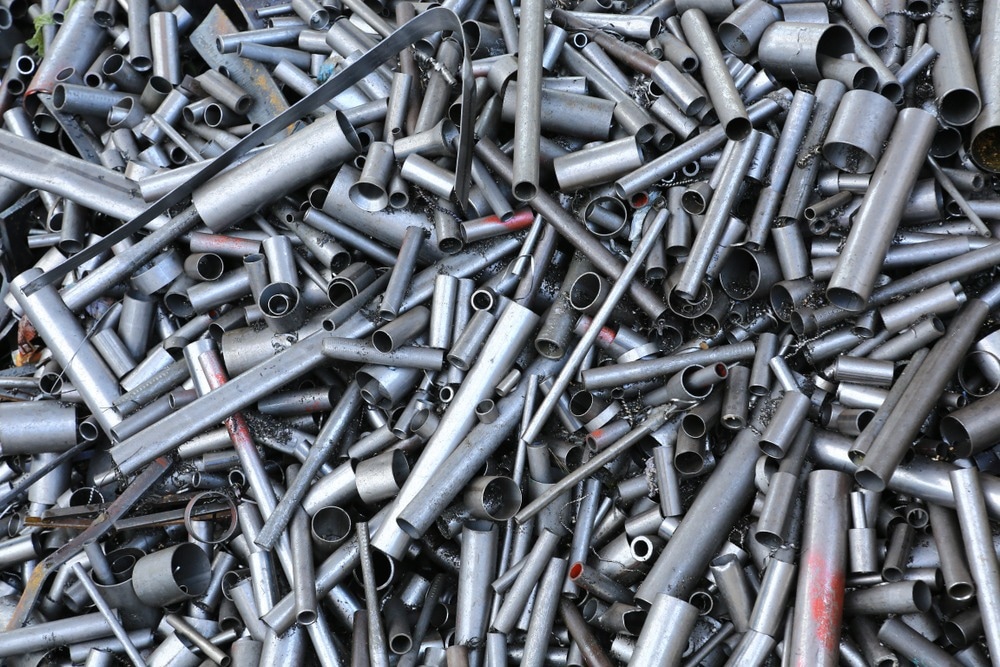Steel is among the most significant materials in the world, essential to cars, buildings, and the infrastructure that enables us to travel around. Steel also contributes 7% of global greenhouse gas emissions. Around 45 countries pledged to pursue near-zero-emission steel over the next decade in 2021; however, questions remain about how feasible that is in our current society.

Image Credit: Jamikorn Sooktaramorn/Shutterstock.com
According to a new study focusing on the Japanese steel industry, if people are committed to achieving zero emissions, the world must be ready for a scenario in which the amount of steel produced is reduced. Japan has set a target of a 46% reduction in steel emissions by 2030 and zero emissions by 2050.
So far, the roadmap for accomplishing this is heavily reliant on future technological innovations. Carbon capture and storage (CCS) and hydrogen-based technologies are being watched with interest.
Dr. Takuma Watari, a researcher at Japan’s National Institute for Environmental Studies who is currently working with the University of Cambridge, insists in the research that there is no silver bullet. He claims that current carbon-cutting plans underestimate the challenges of developing and widely deploying CCS and hydrogen technologies.
These technologies still face serious technical, economic, and social challenges, and have yet to be implemented at scale. And importantly, it is highly uncertain whether there will be sufficient non-emitting electricity to use these technologies.
Dr. Takuma Watari, Researcher, National Institute for Environmental Studies
Researchers must face the possibility that technological innovations will not be available to sustain the current levels of steel production while reducing emissions to zero.
The study examined mapping current steel flows in Japan’s industry and employing a model to investigate how the industry might change if a rigorous carbon budget were implemented in the future.
Dr. Watari describes that under a zero-emission carbon budget, the quality and quantity of steel produced would be drastically reduced. This is due to a lack of resources and the practice of downcycling, which involves using scrap steel with impurities to make new products.
Because these impurities are difficult to remove, the new products differ in quality and functionality from the original steel.
Zero-emission steel production is possible by 2050, but in limited quantity and quality compared to current total production. This is due to the limited availability of zero-emission compatible resources and downcycling practices of scrap steel.
Dr. Takuma Watari, Researcher, National Institute for Environmental Studies
According to the research, with a carbon budget of zero emissions, steel production would be drastically reduced compared to today, reaching only about half of current levels at best. Higher-quality steel production (e.g., sheet steel) would be particularly hard hit in this case.
The implication is obvious. It is insufficient to depend on a technological silver bullet to transform the steel supply. One must also consider strategies to reduce demand by changing the steel-use culture and enhancing material efficiency. Upcycling can also be pursued to produce high-quality steel from scrap steel.
This will necessitate cooperation from both users and producers of steel. Steel products that are crafted to last longer or be lightweight could be made more resource efficient. When steel products reach the end of their useful life, advanced sorting and shredding could be used to remove impurities from scrap steel.
As a society, Japan may need to become less reliant on steel and shift to a model of “service use” rather than product ownership. Unlike today, when steel is abundant and cheap, a net-zero future will necessitate greater efficiency in the use of scarcer, more costly steel resources.
Dr. Watari concludes that there is a need to invest in technological innovations; however, users cannot wait for them to appear. Steel users should be well-prepared for a world where the availability of steel is less.
We do not deny the need to invest in innovative production technologies. Rather, what we want to highlight is that we should look for far more strategic options, instead of simply relying on silver bullet production technologies. Placing material efficiency and upcycling at the heart of decarbonization plans can reduce the over-reliance on innovative production technologies and prepare for the risk that these technologies may not scale up sufficiently in time.
Dr. Takuma Watari, Researcher, National Institute for Environmental Studies
Journal Reference:
Watari, T., et al. (2023) Limited quantity and quality of steel supply in a zero-emission future. Nature Sustainability. doi.org/10.1038/s41893-022-01025-0.